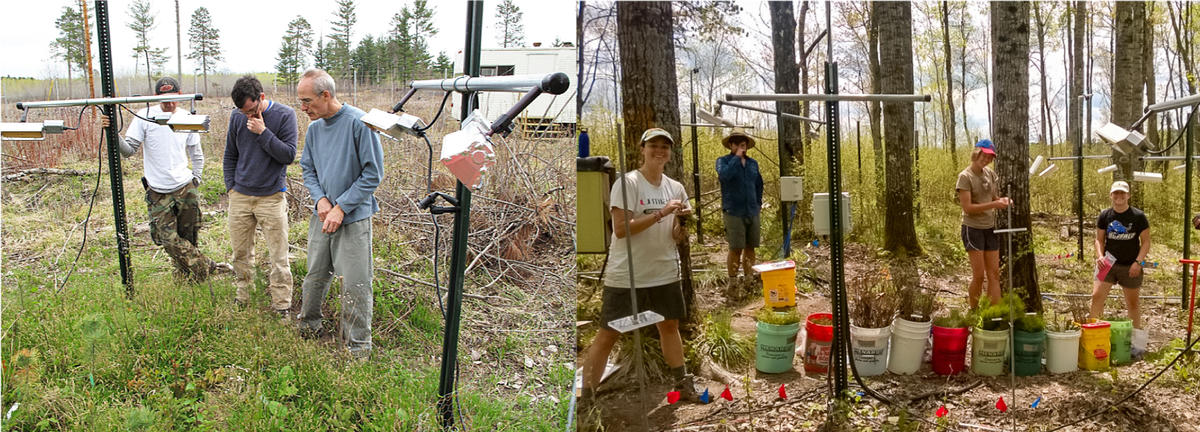
Reich's research team set up experiments in woodlands
Background
Minnesota boasts around 17 million acres of forestland – an area larger than the state of West Virginia. The value these lands bring our state in timber, recreation, tourism and environmental health and diversity is enormous. Unfortunately, our forests face increasing pressures from invasive species and changing weather.
Honeysuckle (Lonicera morrowii, L. tatarica) and buckthorn (Frangula alnus, Rhamnus cathartica) are two invasive shrubs that have already taken hold across central and southern regions of the state. As temperatures and precipitation levels stand to change over time, these shrubs may be poised to become a bigger problem in Minnesota's northern forests as well.
Researchers engaged in this project will begin by mapping the current distribution of invasive honeysuckle and buckthorn across Minnesota. They will then compare how invasive and native trees fare under both current and potential future weather conditions. Ultimately, this will help managers identify possible future "hotspots" of invasion. The team will also test the success of vegetation barrier zones for slowing the spread of invasive shrubs.
Research questions
- What are the growth responses to woody invasives and native trees species to past and current climate conditions?
- What is the potential threat for future woody invasive spread, statewide and in northern forests?
- What are effective methods of creating local barriers to woody invasive spread?
Outcomes
Findings from this project tell the story of how exotic honeysuckle and buckthorn have invaded Minnesota forests, how and why new areas are likely to be invaded in the future, and how we may be able to mitigate invasion using native tree species.
The project team found invasive and more southern native species to be favored by warming conditions in terms of their growth and survival, whereas more northern native species were often strongly disfavored. They established programs to detect current invasion at fine-scale spatial resolution and predict future invasion based on the findings above, and set up long-term experiments to test the ability of tree plantings to slow invasion into new areas.
Publications
- Phenology matters: Extended spring and autumn canopy cover increases biotic resistance of forests to invasion by common buckthorn (Rhamnus cathartica) (Forest Ecology and Management, 2020)
News and media
- In fast-warming Minnesota, scientists are trying to plant the forests of the future (Washington Post, 2020)
- UMN study says Minnesota forests will change with climate (Pioneer Press, 2015)
- Meet the Researcher: Artur Stefanski